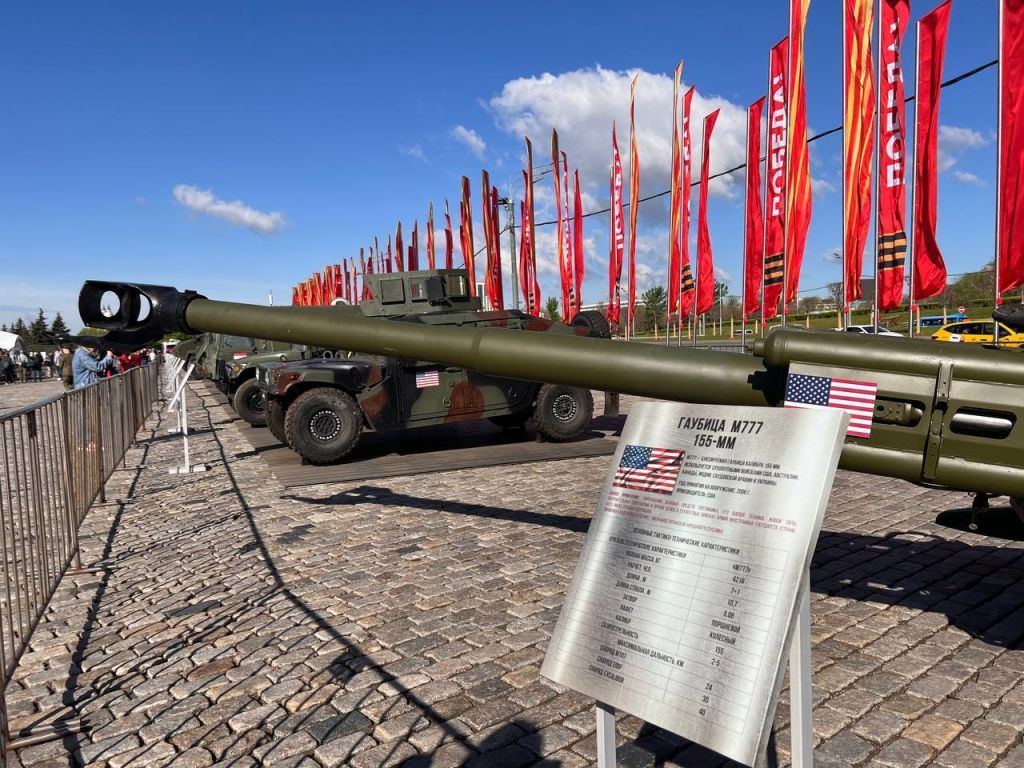Russia has put on display Western military hardware, including more than 30 armored vehicles, at a World War II memorial in Moscow. The display features equipment that has been captured or destroyed by Russia during the ongoing full-scale invasion of Ukraine. The U.S. has provided significant military support to Ukraine, including Abrams tanks, some of which have been lost on the battlefield. Russian surveillance drones have played a crucial role in detecting and targeting these vehicles, leading to the withdrawal of some tanks from the front lines. The exhibition at the memorial appears to be a deliberate attempt to link Russia’s actions in Ukraine to the Soviet Union’s victory over Nazi Germany, as Victory Day approaches on May 9.
President Volodymyr Zelensky of Ukraine has warned that Russia may attempt to capture the town of Chasiv Yar by Victory Day, which is a heavily militarized holiday in Russia commemorating the end of World War II. The town is located west of the Russian-occupied Bakhmut region in Ukraine. Zelensky’s statement underscores the ongoing threat posed by Russia’s military aggression in Ukraine and the need for continued international support to defend against further incursions. The conflict between Ukraine and Russia has escalated significantly in recent years, with Russia’s invasion prompting a humanitarian crisis and destabilizing the region.
The deployment of Western military hardware by Russia at the World War II memorial serves as a symbol of the current conflict in Ukraine and the broader geopolitical tensions between Russia and the West. The display of captured equipment, including U.S.-made tanks, is a propaganda tool used to showcase Russia’s military strength and prowess on the battlefield. By showcasing Western weapons as trophies of war, Russia aims to bolster its image as a formidable military power and intimidate its adversaries. The exhibition is a reminder of the ongoing conflict in Ukraine and serves as a warning to Western allies about Russia’s capabilities and intentions in the region.
The presence of German-made equipment at the exhibition, accompanied by a sign that reads “history is repeating itself,” highlights the historical parallels drawn by Russia between its current actions in Ukraine and the Soviet Union’s role in defeating Nazi Germany during World War II. The narrative of Russia as a heroic defender against external threats, similar to its role in World War II, is a key element of the propaganda campaign surrounding the conflict in Ukraine. By invoking historical symbolism and imagery, Russia seeks to justify its military aggression in Ukraine and rally domestic support for its actions on the international stage.
As the conflict in Ukraine continues to unfold, the display of Western military hardware by Russia at the World War II memorial serves as a stark reminder of the ongoing hostilities and the human cost of war. The exhibition is a reflection of the complex and multifaceted nature of modern warfare, where advanced technology and propaganda play significant roles in shaping public opinion and perceptions of military conflict. The deployment of surveillance drones and other high-tech weaponry by Russia underscores the evolving nature of warfare and the challenges faced by Ukraine in defending its sovereignty and territorial integrity against a well-equipped and determined adversary.


